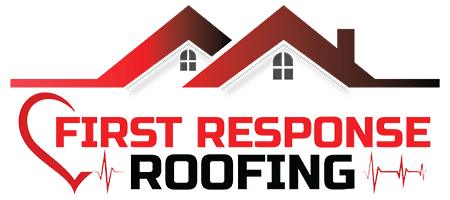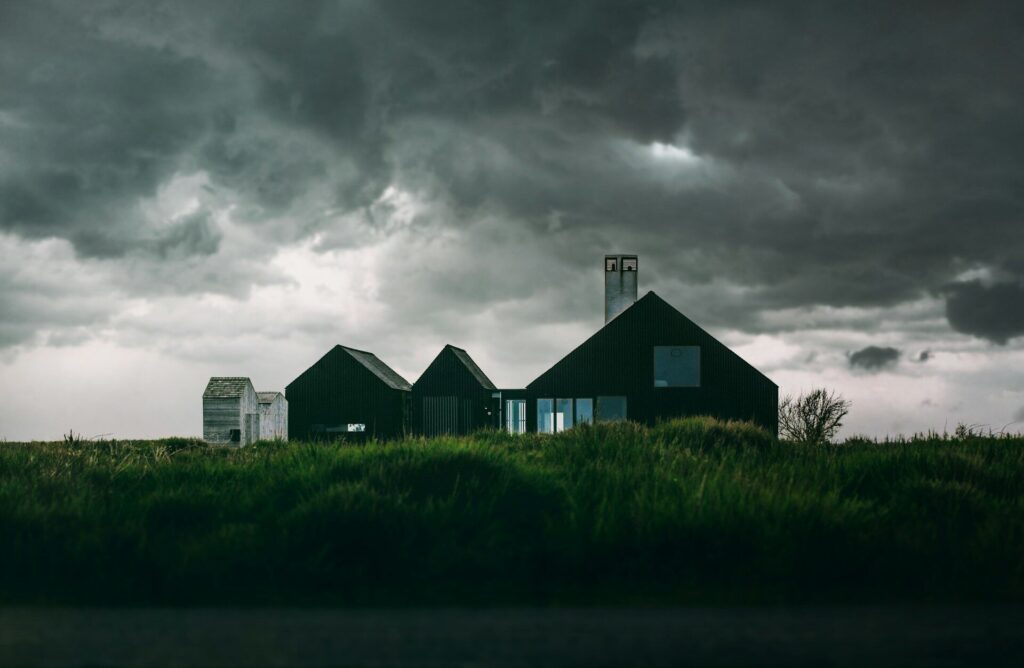Storms don’t always give you a warning. They roll in fast, bringing wind, hail, and heavy rain that can leave behind all kinds of damage. One of the most vulnerable parts of your home is your roof. Shingles can tear off, flashing can loosen, and debris can leave major dents or even punctures. Sometimes the damage is visible, but other times it’s hidden beneath the surface, quietly allowing in water that will lead to bigger problems later.
The faster storm-related roofing issues are handled, the better. Waiting too long can turn what would’ve been a quick fix into a major repair, especially if water gets into the structure. It helps to know what to look for right after a storm and what steps to take to avoid more harm until help arrives. Quick action keeps your home safe and prevents costs from piling up later.
At First Response Roofing, we serve as trusted storm damage roofing experts, helping homeowners recover quickly and confidently after harsh weather hits.
Identifying Storm Damage
Not all storm-related problems are obvious at first glance. Sometimes everything looks fine from the ground, but issues can still be hiding in the layers of your roof. That’s why knowing the signs of damage, and acting on them quickly, makes a big difference.
Here are common signs to watch for once the storm has passed:
- Missing or lifted shingles
- Flashing that appears bent or loose around vents or chimneys
- Water spots on your ceiling or attic rafters
- Pieces of shingles or roofing material found on the ground
- Clogged or overflowing gutters
- Debris that might have hit your roof, like tree limbs
Some of these signs might be visible from your yard, while others could show up inside your house. A roof leak doesn’t always drip right away. It may start small, seeping into insulation or behind walls where it goes unnoticed until stains or musty smells appear.
After a big storm, it’s also smart to do a walk-around and gently inspect areas near your home’s edges and gutters. Pay close attention to anything that wasn’t there before. Stones, crushed leaves on the roof, or dripping from vents are all red flags. Even if the roof seems okay, a professional inspection helps you know for sure. Many roof problems aren’t surface-deep, and they rarely fix themselves.
One homeowner we worked with noticed a small water stain on their hallway ceiling days after a storm. What started as a barely noticeable mark turned out to be a cracked shingle above their attic vent. Once water got in, it traveled far before making itself known, which meant more cleanup later. Catching it early would’ve stopped it from spreading.
It’s better to get ahead of small problems now than wait for the next hard rain to reveal them.
Immediate Actions To Take
When your roof takes a hit during a storm, time matters. Even if it doesn’t seem like an emergency, it’s best not to wait. Taking a few key steps can help protect your home while you figure out what needs fixing.
Here’s what you can do right away:
1. Stay safe. Avoid climbing on the roof yourself. Slippery or unstable surfaces can be more dangerous than they look. Use binoculars from the ground to check for visible damage.
2. Take photos. If you notice missing shingles, dents, or debris, photograph everything. This helps track issues and may support insurance claims later.
3. Use a tarp or cover. If you can place a tarp safely over a damaged area (without climbing), it’ll help keep out rain or pests. But this is a short-term solution.
4. Clear gutters and downspouts. Remove visible clogs or branches so water can flow freely. Pooling water can lead to faster damage.
5. Keep interior damage from spreading. Place buckets or containers under leaks. Move furniture or electronics out of the path of drips or damp spots.
Any sign of water entry means you should reach out right away. Even a small crack or loose tile can leave your home open to the elements. Once water finds a way in, it doesn’t take long for it to soak through insulation, drywall, or ceiling panels.
A fast response limits the damage and gives you more control over the situation. Then, once a roofing expert inspects and repairs the area, you can breathe easy knowing your roof is back where it should be, protecting everything inside.
Professional Repair And Restoration
Once you’ve done what you can to reduce damage and keep things dry, the next step is to bring in experts who know what to look for and how to fix it right the first time. Even small roof problems, like a few missing shingles, can lead to big trouble down the road. Having a team that focuses on storm-related roof repair gives you peace of mind and a clear plan forward.
Roof repair after a storm isn’t always straightforward. Water can travel far from where it originally came in, and hidden damage to the underlayment or decking isn’t always visible from outside. A professional roofing crew knows how to spot those sneaky issues. They check everything from the flashing around chimneys and vents to the seals, layers, and joints most folks don’t even think about.
There’s a big difference between patching a visible problem and actually fixing the root of it. While you might be able to cover up a leak with a tarp, only a trained expert can tell you if any internal materials have been weakened or if a section of the roof needs to be fully replaced to avoid more damage.
Hiring experts also means faster and safer work. You’re not putting yourself at risk, and the repairs are more likely to hold up when the next storm rolls through. A quality repair job keeps your roof tight, drains clear, and materials sealed the way they should be.
At First Response Roofing, our team handles storm damage with care and experience, making sure each repair is thorough and durable.
Preventative Measures For The Future
After you’ve handled the damage, it’s smart to start thinking ahead. Storms are unpredictable, but the more prepared your roof is, the better off your home will be.
Here are a few ways to help protect your roof before the next storm hits:
- Schedule yearly inspections so small problems don’t become big ones
- Trim back tree branches that hang close to the roof
- Make sure gutters and downspouts are always clear and working
- Check for loose tiles, cracked materials, or worn edges now and then
- Ask a roofing expert about impact-rated shingles or reinforced flashing if your home gets frequent storms
Thinking about protection early might seem like extra work, but it can save you money and stress later on. For example, one homeowner had us look over their roof during a clear season. We found a few lifting shingles and some worn sealant by the chimney. They chose to repair everything on the spot. Months later, when a heavy storm with strong winds hit, their roof came through without a single leak, while their neighbors had to deal with emergency calls and soaked drywall.
It’s the kind of step that doesn’t feel urgent until it’s suddenly too late to plan ahead. Making small updates now can spare you from big repairs later.
Your Roof Deserves the Right Response
Storm damage feels stressful in the moment, but it doesn’t have to leave a lasting mark. Roof problems can be addressed quickly by a skilled crew, and once things are restored, your home will feel steady again. The key is acting fast, knowing what signs to watch for, and bringing in the right kind of help when you need it.
Keep in mind that your roof is your first defense. When it holds, everything underneath stays protected. With the right repairs and a little planning, your home can bounce back and be ready for whatever comes next.
When unpredictable storms affect your roofing, it’s time to seek experienced help. At First Response Roofing, we have the expertise to address any issues you face and help secure your home against future weather events. Don’t delay in protecting your most valuable asset. Learn how our trusted storm damage roofing experts can restore and fortify your roof, making sure you’re ready for whatever comes next. Contact us today to schedule your inspection.

